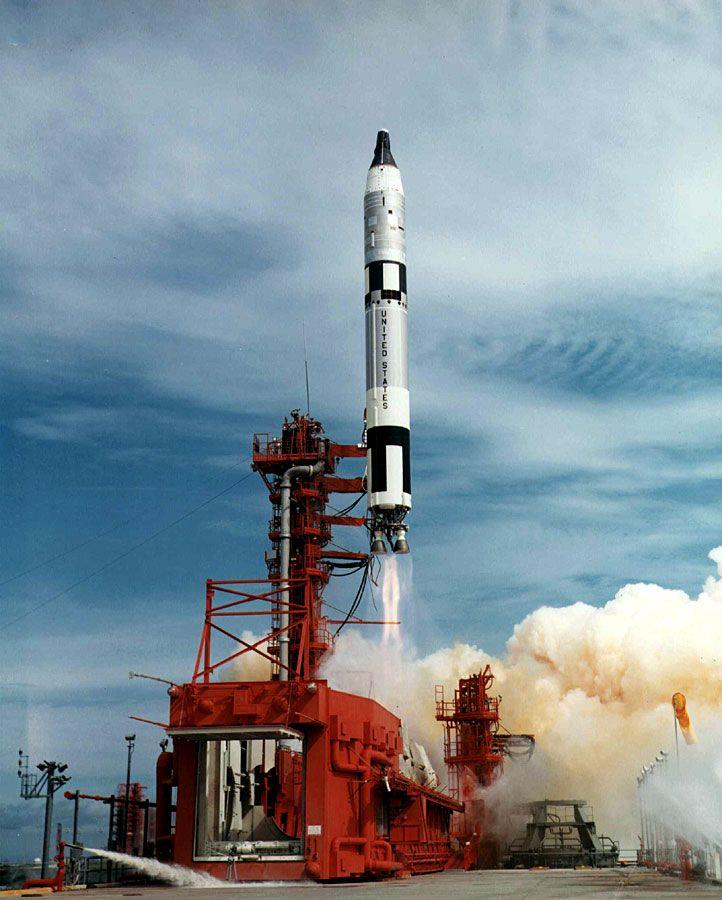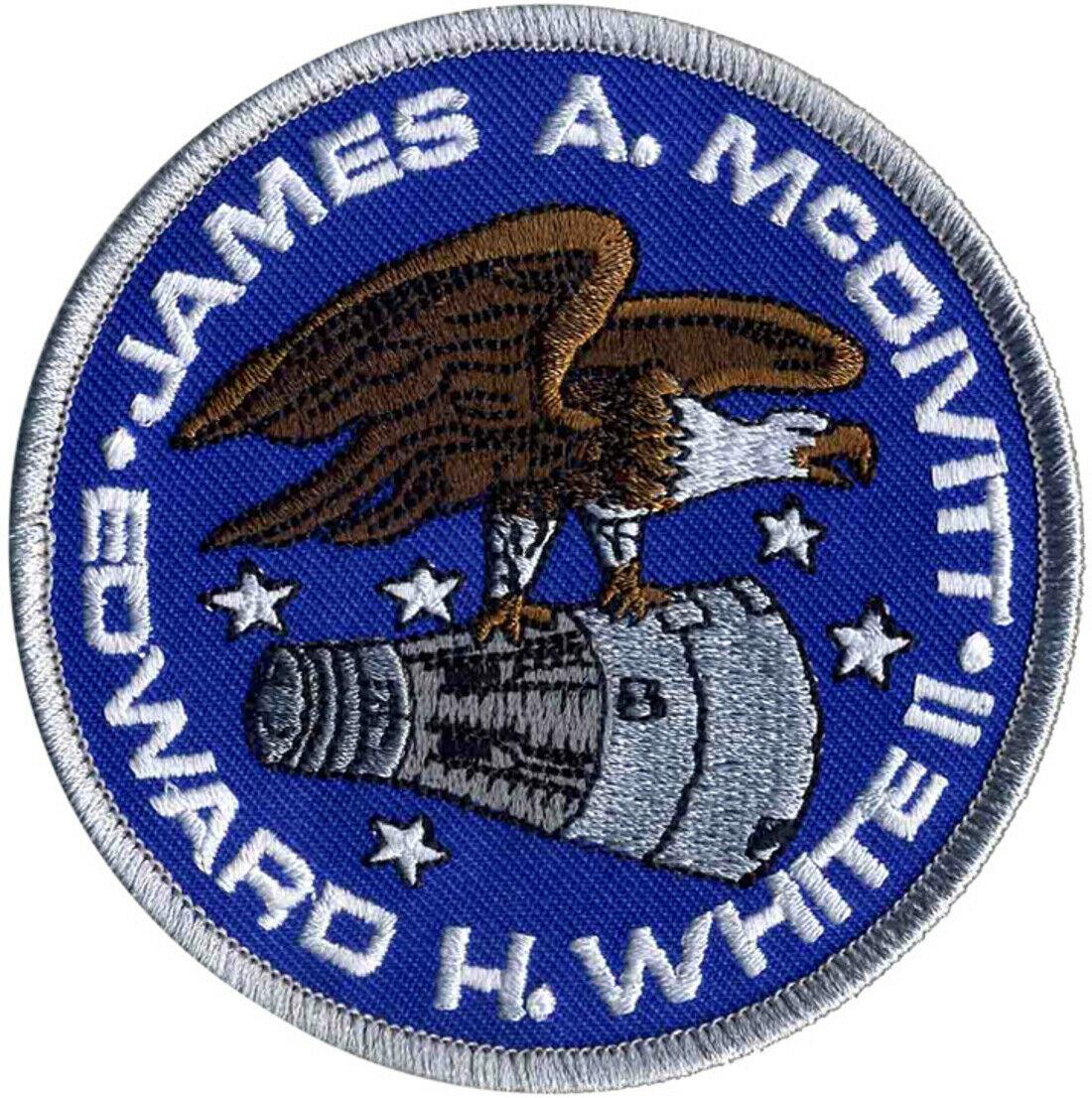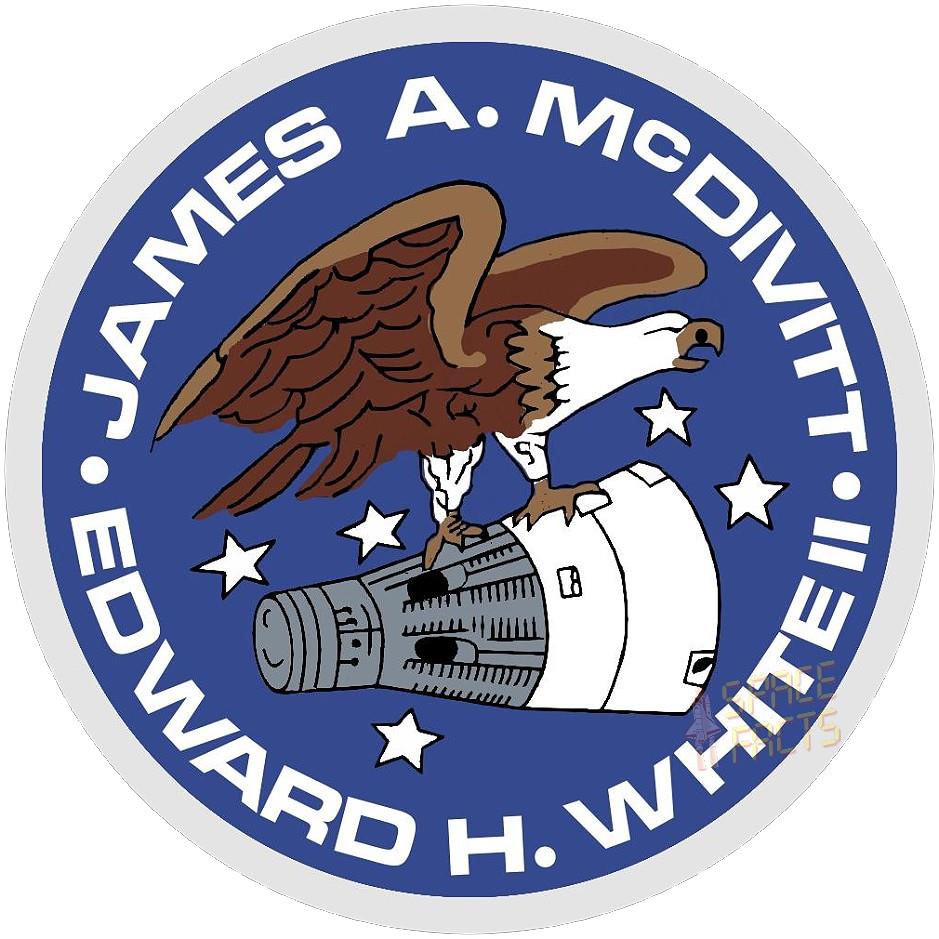Astronauts:
Command Pilot:
James A. McDivitt
(First Flight)
Pilot
Edward H. White II
(First Space Flight)
Backup Crew:
Command Pilot: Frank Borman
Pilot: James A. Lovell, Jr.
Support Crew:
Command Pilot: Clifton C. Williams (Cape CAPCOM)
Pilot: Virgil I. "Gus" Grissom (Houston CAPCOM)
Gemini 4 (or Gemini IV) was the second manned space flight in NASA's Project Gemini, occurring in June 1965. It was the tenth manned American spaceflight (including two X-15 flights at altitudes exceeding 100 kilometers (54 nmi)). Astronauts James McDivitt and Edward H.White, II circled the Earth 66 times in four days, making it the first US flight to approach the five-day flight of the Soviet Vostok 5. The highlight of the mission was the first space walk by an American, during which White floated free outside the spacecraft, tethered to it, for approximately 20 minutes. Both of these accomplishments helped the United States overcome the Soviet Union's early lead in the Space Race.
The flight also included the first attempt to make a space rewndezvous as McDivitt attempted to maneuver his craft close to the Titam II upperstage which launched it into orbit, but this was not successful.
The flight was the first American flight to perform many scientific experiments in space, including use of a sextant to investigate the use of celestial navigation for lunar flight in the Apollo Programme.

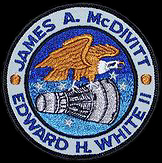





![]()
Study
Research
Main Index
Space Cosmology
Science Research
*
About
Science Research
Science Theories
Desk
Site Map
BookShelf
Copyright © by Nigel G Wilcox · All Rights reserved · E-Mail: ngwilcox100@gmail.com
Designed by Nigel G Wilcox
Powered By AM3L1A
Pages within this section: Gemini Manned Space Flights
Gemini 4
Pages within this section:
1
M
8
SM
Sub-Menu
menu
2
3
4
5
6
7
8
9
Gemini Manned Missions
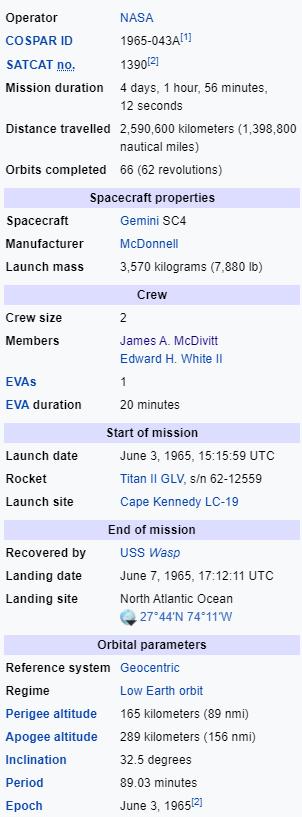
Gemini 4 would be the first multi-day space flight by the United States, designed to show that it was possible for humans to remain in space for extended lengths of time. The four-day, 66-orbit flight would approach but not break the five-day record set by the Soviet Vostok 5 in June 1963. Subsequent Gemini flights would be longer, to prove endurance exceeding the time required to fly to the Moon and back.
A second objective was the first American extra-vehicular activity (EVA), known popularly as a "space walk". The first space walk had already been performed by Soviet Alexei Leonov on Voskhod 2 in March 1965. NASA moved up the spacewalk from the original schedule, to demonstrate that the US was gaining on the early lead taken by the Soviets in what was known as the Space Race. As late as 11 days before the scheduled June 3 launch, newspapers were reporting that NASA was saying it "had not yet determined whether White would be the first American astronaut to expose himself to the elements of space," and that "A decision might not be made until a day or two before launching."
A third objective was for Gemini 4 to attempt the first space rendezvous, flying in formation with the spent second stage of its Titan II launch vehicle.
The computer failed on the 48th revolution. This was unfortunate for IBM which had just put an advertisement suggesting that its computers were so reliable that even NASA used them. The computer failure meant that the capsule would not be able to perform a closed-loop lifting reentry as planned.
Reentry came on the 62nd revolution. An open-loop rolling reentry (as used in Mercury) had to be used because of the computer failure. The astronauts began rolling the spacecraft at 120 kilometers (65 nmi) altitude to increase its stability. They started slowing the roll rate at 27,000 meters (89,000 ft) and stopped it by 12,000 meters (39,000 ft). The drogue parachute deployed shortly after this, and the main deployed at 3,200 meters (10,600 ft). A malfunctioning thruster caused the roll to be much faster than planned, and the landing was rough. Neither of the crew encountered any problems, however, contrary to NASA doctors' concerns about their landing upright — as opposed to on their backs, as in Mercury — after four days in space. Even though they landed 80 km (43 nmi) short of the intended landing target, some ships had already started steaming to the touchdown point and a helicopter was able to see them land. The prime recovery ship was USS Wasp. The recovery was supported by 10,249 U.S. Department of Defense personnel, 134 aircraft, and 26 ships.
Postflight medical examination found the astronauts to be in good health and no significant physiological changes were found.
Gemini 4












